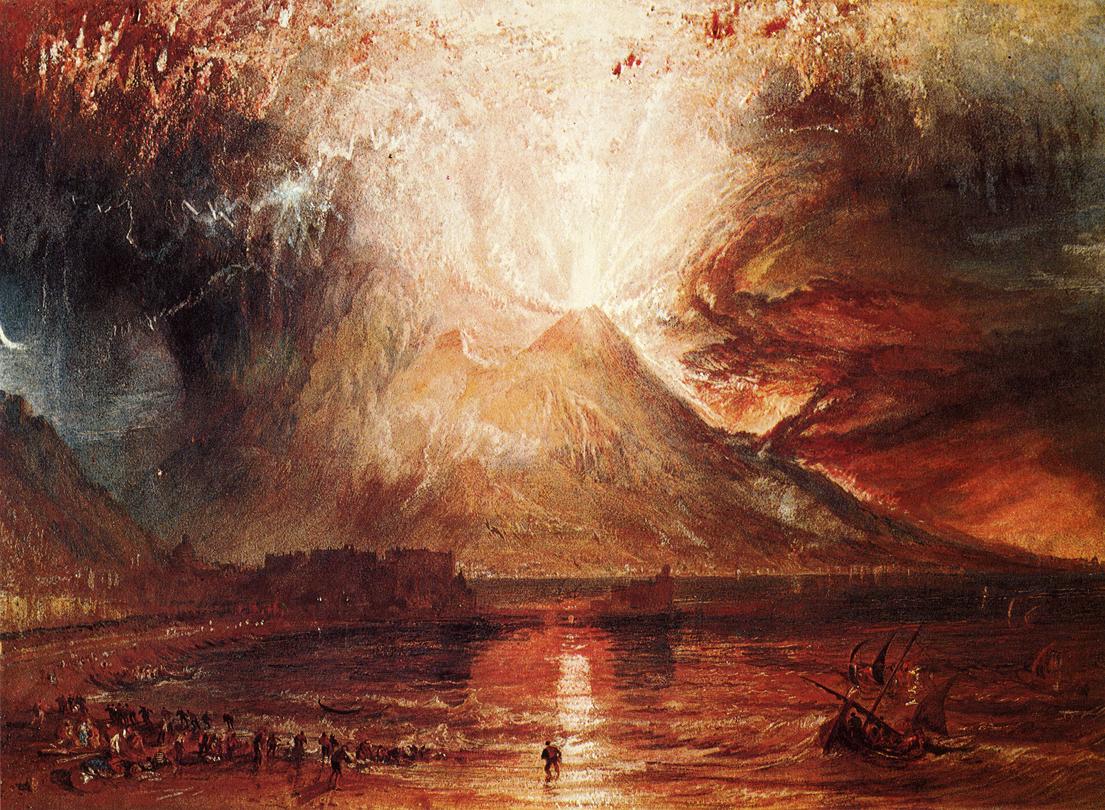Mount Vesuvius in Eruption
7:00 AM |
| J.M.W. Turner, Mount Vesuvius in Eruption, 1817 |
By MADLELINE VASQUEZ
In Mount Vesuvius in Eruption, Turner creates a wonderful composition of beauty and catastrophe, just like how life is. The idea behind this painting all began when he began to study other artist works and the knowledge of volcanoes. He did not actually visit Mount Vesuvius until 1819, two years after the the painting was exhibited. The vision of the eruption of a volcano appealed to Turner and the transcendence behind the concept of everyday life. He never actually witnessed an eruption occur, but painted what he thought it would look like. The effect of using bright light colors, such as white, mixed with darker hues, the dramatic image of the volcano erupting is shown. With the choice of variations of orange, red, yellow, and brown, the audience is able to see the intensity behind the action going on in the painting.
William Wordsworth’s poem, "Mutability," not only encapsulates Turner’s painting of Mount Vesuvius, but also his perspective on the world. Mutability discusses how everything in nature eventually will fail and be destroyed completely in the end. Overtime, everything changes. Nothing ever stays the same no matter the circumstance whether it’s subtle or immense. The use of music is important to the poem because the references “melancholy chime” and “high to low, along a scale” in relation to “avarice” and crime,” which shows how something depressing and unpleasing can be beautiful in its own way. This relates to Mount Vesuvius in Eruption because it presents how something in nature that is so magnificent and awe worthy eventually gets demolished by a natural occurrence in nature.
0 comments